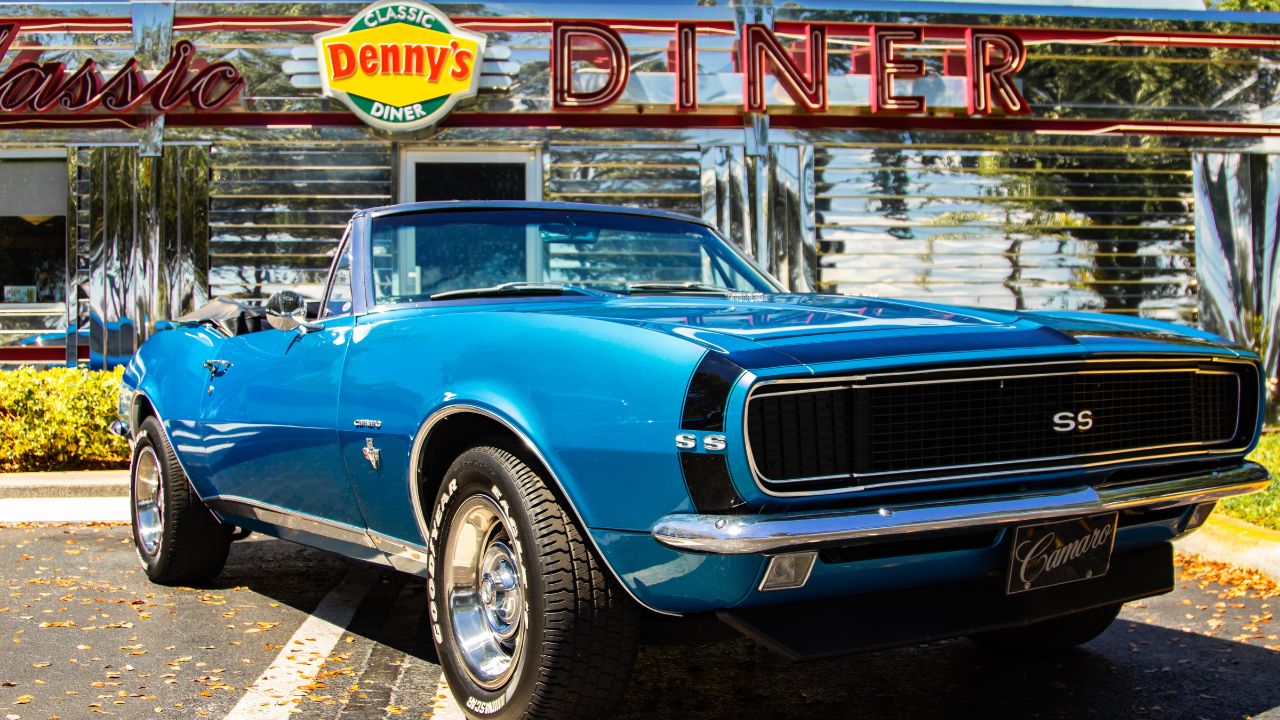
The advancements in automotive technology have allowed classic muscle cars to make great strides. Modern muscle cars are only available to those who have the money, but it is still possible to buy a classic golden-era car. These are the ten best muscle cars for under $100. From an old-fashioned subcompact sedan to a new-fangled muscle car, these affordable cars are sure to turn heads.
El Camino is a cheap muscle car
While the classic El Camino isn't exactly cheap, it can still be considered a muscle car. It was built to haul large loads and it is a great vehicle for those who want to have some fun. Originally, the El Camino was developed as a commercial vehicle but later it was also produced for leisure driving. The El Camino is often thought to be a muscle car but it is actually a pickup truck disguised as a sedan. The El Camino's styling was designed to make it more distinctive than a typical pickup truck, and ads claimed that it rode like a convertible.
Ford Mustang is a muscle car that's affordable
Ford Mustang may be the best choice for those looking for classic muscle cars at an affordable price. This car is more affordable than many muscle cars and it has great handling. Although the classic Mustang was a classic vehicle, it lost some of its muscle. The Ford Mustang sold with a rear axle that was live in the 1980s. This made handling very difficult. A Mustang with a living rear axle is not recommended as it can lose control or fly into crowds. Ford made improvements to this car in 2015, and it's now much more reliable.

Chevy Impala, a muscle car for a bargain price
A Chevy Impala is a great choice if you are looking for a muscle car without breaking the bank. This muscle car, which has been in production since 1963, is a bargain to own. The Impala was produced for the first time in California. Since then, it has undergone many body changes. The Impala was Chevrolet’s most expensive model. It quickly became synonymous to superior performance, introducing Chevrolet’s "SS” brand of performance. It was heavy, but it was not the best choice for people who prefer a smaller car.
Mercury Comet is a cheap muscle car
Mercury Comet could be a bargain option for you if you are in search of a muscle car. This classic car is often overlooked and undervalued today. You can still get a 302 in perfect condition for an amazing price, despite the low price and excellent engine. Mercury produced this car in only three different models between 1961 and 1973. This is the ideal muscle car for those who are looking to have an American classic without spending a fortune.
Mercury Comet was a drag racer's terror
The Mercury Comet compact car was a mid-sized, senior model that first debuted in 1966. The Ford Maverick compact car was the basis of the Mercury Comet, but it received a completely new body. The Comet was a mid-sized car but its styling caught the eye of drag racers. From 1966 to 1978, the Mercury Comet was manufactured and sold more than 1.6 million units.
Pontiac GTO was a drag-racer's nightmare
Pontiac GTO was the ultimate supercar. It had a 421 horsepower V8 Engine. Although the car was heavy, engineers were able to solve the problem by using aluminum for many of its parts. This was the reason for the car's nickname, "Swiss Cheese."

Dodge Dart Sport is a muscle car that's affordable
The Dodge Dart is a great choice for a low-cost muscle car. Because of its wide availability and huge aftermarket supply of performance components, the Dart can be a great car. While not everyone can afford the pricey classic Hemi Challenger, they can easily afford a V8 powered Dart. The stock version is fun and fast. No matter what you do with it, whether you customize it with performance parts and get the factory performance look you desire, you will be able to impress everyone.
FAQ
What information do I need about car mechanics
You don't need to know anything about cars to work as an auto mechanic. The only thing you need is the ability to fix them. Most people start by fixing things like changing tires or fitting brake pads.
You will need to understand written instructions, read diagrams and follow the basic rules of good practices. It is also important to know how to determine if parts are damaged or need to be replaced.
It is important that you have proper training and guidance before you attempt to repair vehicles. This is especially true if your job involves expensive parts like transmissions or engines.
Although you won't have to know much about automobiles, you must be familiar with the basics of mechanical engineering as well as physics. This means understanding the principles behind how engines work and how brakes function.
It's also worth noting that you'll need to be prepared to deal with all sorts of situations. For example, you may find yourself working on a vehicle that has been involved in a serious accident. You'll also need experience dealing with breakdowns and accidents.
You should also be open to learning quickly. You will need to be able not only to diagnose problems but also to perform simple maintenance tasks like tightening bolts and nuts.
What length of an automotive course is it?
A course in automotive lasts three years.
The first year is spent learning about cars and theory. The second year is dedicated towards practical training. This includes learning how to drive, fix engine problems, and doing other maintenance jobs around your car. The final year includes a placement at an auto shop. This gives you real-world experience fixing real problems.
Is it really worth becoming a mechanic.
The answer to this question will depend on your goals for life. If you are looking for financial gain, then yes. However, if purpose and meaning are what you seek, then no.
If you don't have any mechanics skills, then there's no point getting into it because you'll just end up wasting time. You won't become rich from it. It will not make you famous. And it's unlikely to change your life.
It would take you years to learn how to do everything correctly. You would still need to hire someone to fix your car if it breaks down. It's the reason most people don't bother. They find something better to do instead.
Let's sum it up: If you want to make a lot of money, then do so. The mechanic's profession is not the right place for you if it means that you will live a fulfilled life.
Statistics
- According to the BLS, the median annual salary for automotive service technicians and mechanics in the United States was $44,050 in May 2020. (uti.edu)
- The U.S. Bureau of Labor Statistics (BLS) reports that the job outlook for automotive service technicians and mechanics is expected to decline by 4% from 2019 to 2029. (indeed.com)
- There were 749,900 jobs available for automotive service technicians and mechanics in 2016, which is expected to grow by six percent through 2026. (jobhero.com)
External Links
How To
How to diagnose your vehicle properly for repair
To determine if your car needs repairs, you should first look at the symptoms that your car presents. Then, follow these steps to diagnose your vehicle properly.
-
Check engine lights. Check the dashboard light indicators such as the engine light indicator, the oil pressure gauge, the battery light indicator, the coolant temperature gauge, and the RPM gauge. It could indicate that your vehicle is having problems.
-
Take a look at the treads. Tires that are worn can cause issues with handling and braking. It is also important to inspect the wheel treads. They should look clean and be smooth. It is best to take off the wheels and remove them. A flashlight can be used to check how worn the treads are.
-
Check the level of brake fluid. You must always monitor the level of your brake fluid. This will ensure that your brakes run smoothly. Your brakes may fail if the brake fluid level drops.
-
The suspension system should be tested. A suspension system is designed to absorb vibrations and shocks. This suspension system provides greater control and smoother acceleration and deceleration. If your vehicle has a suspension problem, it might feel wobbly or shake uncontrollably. To determine whether your vehicle may have a suspension issue, you can try to put weight on the rear or front axle and watch the movement.
-
Examine the steering column. The steering column is used to link the steering wheel with the rest of vehicle's components. The steering column can often be damaged by an accident. Replace it if your steering column feels loose or unsteady.
-
Pay attention to the exhaust pipe. The exhaust pipes transport gases from the combustion chamber to outside. You can let harmful fumes into your home if your exhaust pipes crack or leak. You should also fix any bent tailpipes immediately.
-
Look under the hood. If you see anything unusual, take a look under the hood. There could be fluid leaking from your engine. A professional technician should be contacted if your engine compartment emits an unusual smell.
-
It is important to inspect the air filter. The vehicle's outside environment may cause the air filter to collect dust and debris. A dirty air filter causes your vehicle to run poorly. Replace your air filter regularly.
-
Check the fan belt. Your vehicle's fanbel is what connects the engine and the transmission. If the fanbel breaks, your engine won't turn. The process of replacing the belt is straightforward. All you need is a screwdriver and some pliers.
-
The radiator hose and hoses should be checked. The radiator hose carries water from the radiator to the engine. If it becomes cracked or damaged, it can leak hot liquid onto the engine. You only need a pair of needle-nose pliers and a small wire brush to repair the hose.
-
You should inspect the windshield wipers. Windshield wipers use electricity to remove snow and rain. They can leave streaks on your windows glass if they stop working. You can fix the problem by changing the washer fluid.
-
Make sure you check the cables. Batteries provide power to electrical systems inside your car. If you are replacing batteries, disconnect the negative cord first. Failure to do so can damage your alternator.
-
Pay attention to your headlights. Headlights help you see the road ahead. They can make it difficult to see if they stop working. To check if the bulbs have gone out, you can inspect them.
-
Check the lights. If you approach other drivers at night, lights will warn them. One that doesn't work could cause you to be distracted, and possibly lead to an injury.
-
Inspect your brakes. Before you have a collision, brakes slow down your car. If they aren't working correctly, you could lose control of your car and crash.
-
Change the oil. Keep your engine lubricated with oil. It helps prevent metal parts from wearing out too quickly. It is recommended that you change your oil at least once per month.